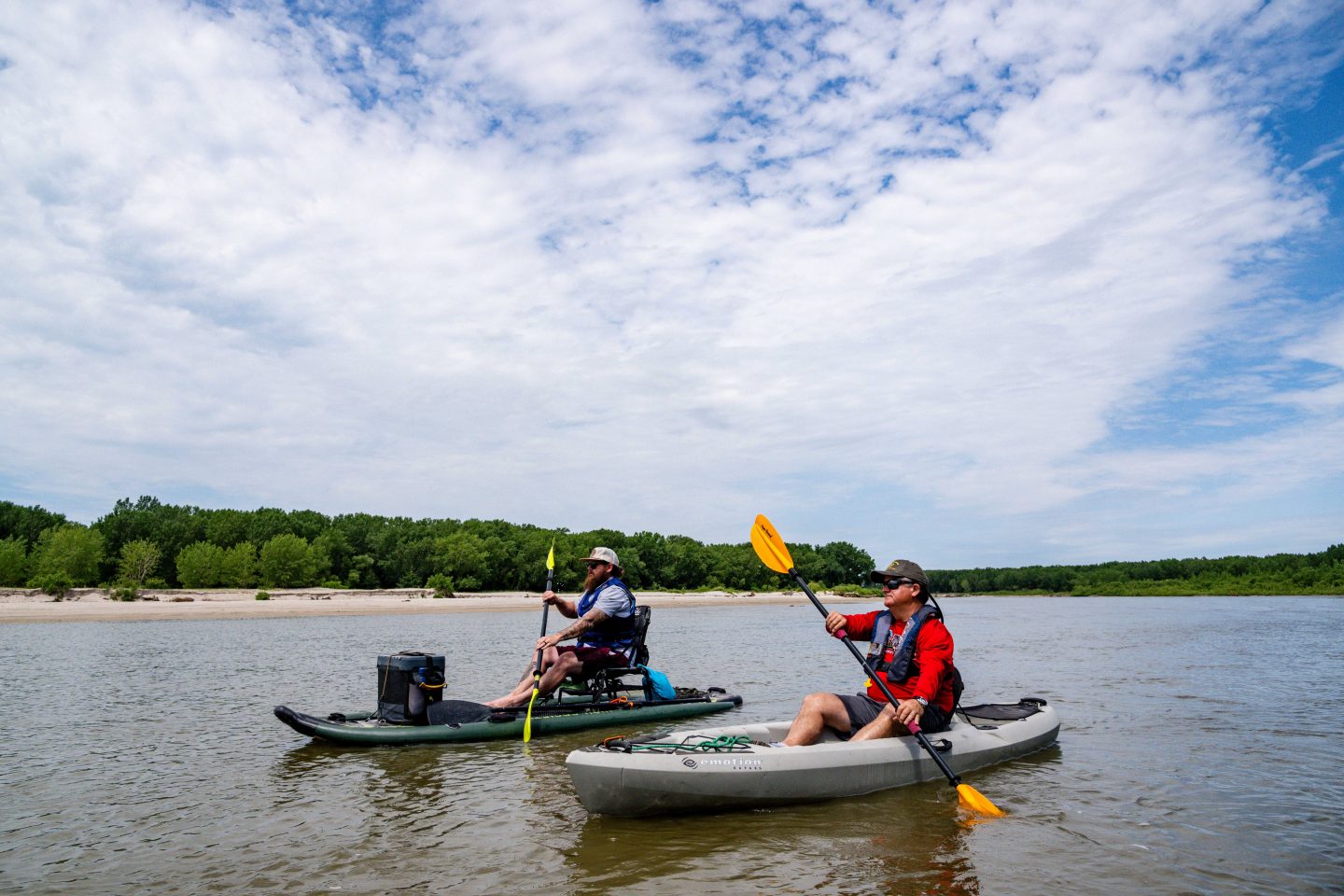
Story and photos by Eric Fowler
The Loup is a beautiful, braided river, flowing for 69 miles through fertile, eastern Nebraska farm country, surrounded by towering cottonwoods that serve as ideal perches and nesting spots for bald eagles.
Other than those who hike down its bank at five wildlife management areas along its course or a city park in Columbus, few people spend time on the river. Until recently, even fewer paddled its waters, primarily because there was nowhere to easily get on and off the river. That changed in 2023, when the Loup River Water Trail was completed between Genoa and Columbus, the culmination of work by many, opening the river to the countless individuals who have taken up paddle sports in recent years.
Ken Curry grew up in Lincoln, but his mother was from Tilden. During the summer, the families would meet on the banks of the Loup River at Pawnee Park in Columbus, the midway point between the communities, for picnics. “As a little kid, we would run up and down that river,” Curry said.
He has watched people play in the Loup River on summer weekends since moving to Columbus in 1991. In many years serving on the Chamber of Commerce, the river occasionally came up during chamber planning meetings. “We always said we have a great asset, this river, but we never did anything with it,” Curry said. Similar discussions came up during his time spent as a leader at the local and district level of what is now Scouting America. An Eagle Scout himself, neither of his sons paddled the river during their path to the same rank. Access was the issue.
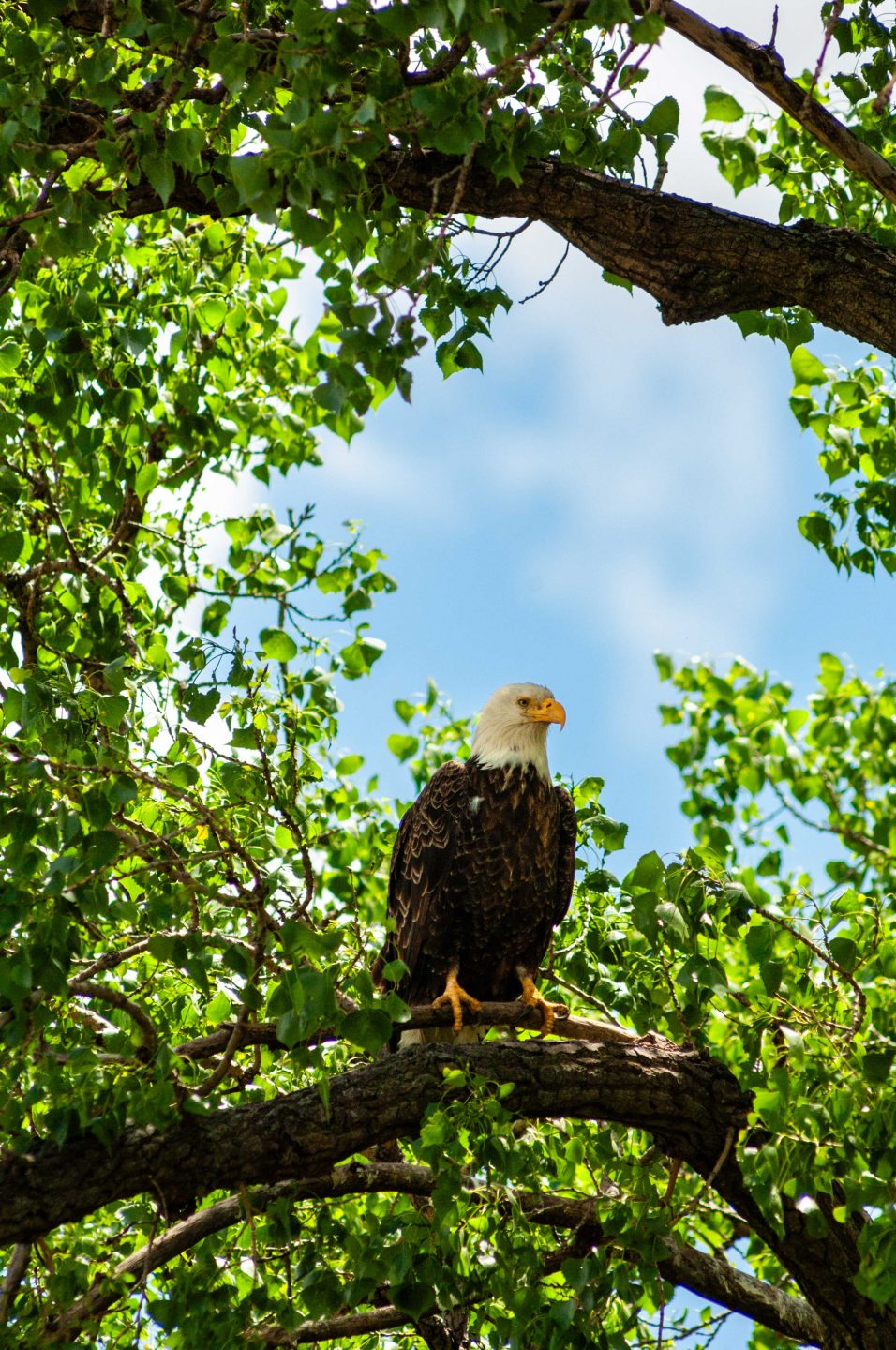
In 2021, when he was appointed to the Game and Parks’ Board of Commissioners, Curry started learning more about water trails. That led to a meeting between a few Platte County commissioners and the Columbus mayor and city administrator. They reached out to Lee Rupp, and a former state senator and Game and Parks fisheries biologist, a long-time resident of Monroe with a love for the river, for advice. Rupp already had notes and a map drawn up when they met with him. “We all said: ‘Let’s make it happen’,” Curry said.
While an official water trail access couldn’t be built on George D. Syas Wildlife Management Area southeast of Genoa, an existing fishing access point could be utilized as the starting point. Eight miles downstream, the county agreed to build an access point with plenty of parking on land it owned south of Monroe. At Columbus, 16 miles downstream, owners of the Quality Inn agreed to allow paddlers to use their parking lot, a 250-yard walk up the newly paved Pawnee Park Trail from the riverbank. With those three points in place, the trail was opened in the spring of 2023.
Late last year, a fourth point was developed 4½ miles downstream on the banks of the Platte River, a mile from the mouth of the Loup. Archer Daniels Midland, owner of an ethanol plant north of the site, granted the city an easement for the access point. Other collaborators in the project included the Nebraska Game and Parks Commission, the Columbus Area Convention & Visitors Bureau, the Columbus Morning Rotary Club and Columbus Area Recreational Trails.
“I’m a firm believer that a good idea is just looking for the right time, and it turned out to be the right time,” Curry said. “The collaboration of this community is great. We’ve always come together to find ways to win and do things together, and this is just another example.”
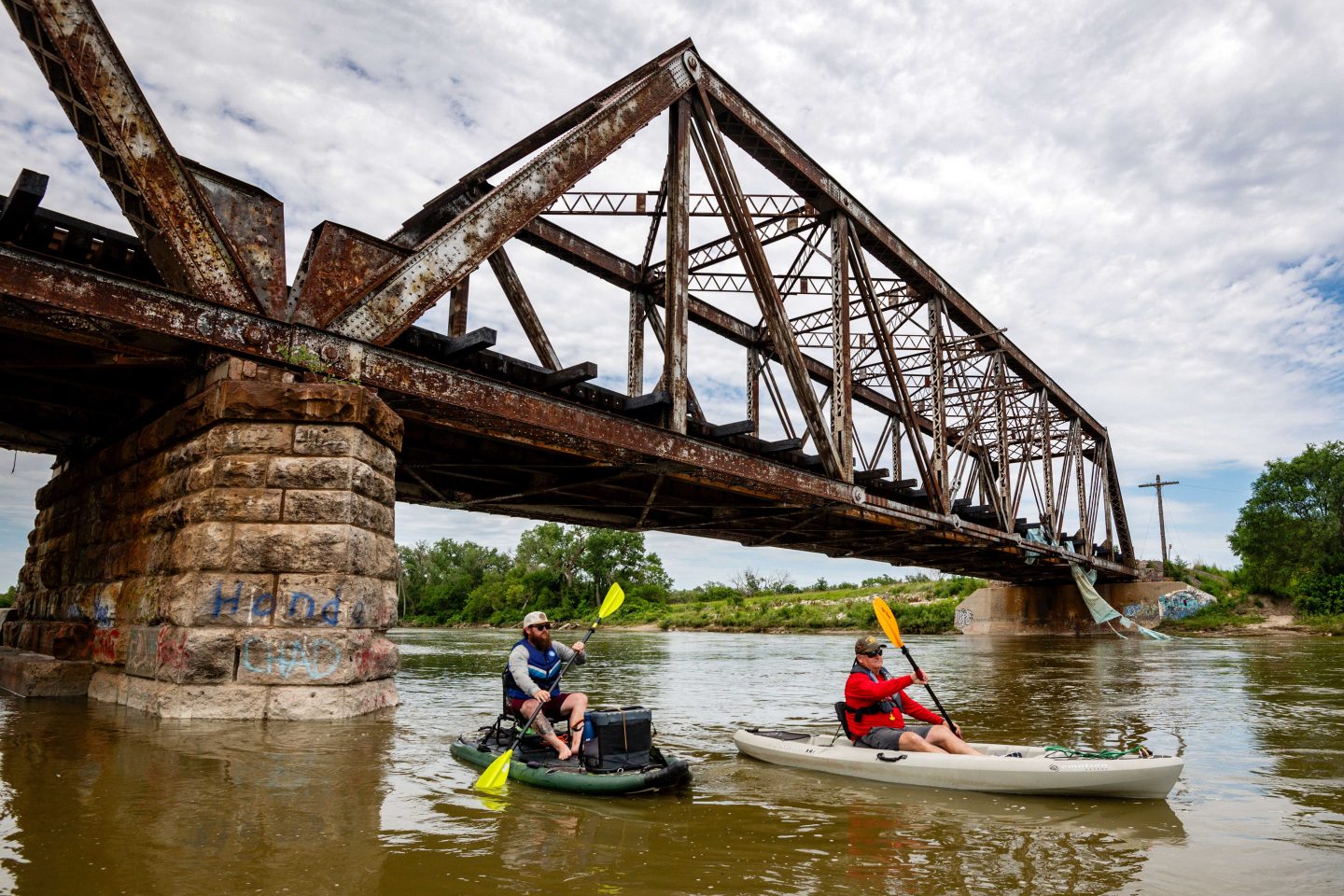
In most places, the Loup River looks like a smaller version of the Platte, a wide, braided channel filled with constantly shifting sandbars on a generally easterly course across the state. In a few places, it looks like the Elkhorn, meandering through the valley, carving away at the outside bank and forming beautiful sandbars on the inside of bends.
I floated the Loup River Water Trail from Monroe to Columbus late last June with Curry and his son, Brian. Along the way, we lost track of the number of bald eagles and red-tailed hawks we saw perched in trees along the river or soaring above it. We saw beaver and deer along the willow-lined banks, and the sound of our paddles occasionally sent silver carp, an invasive, non-native species, jumping out of the water.
The Loup River and its three branches, the North, Middle and South Loup, drain one-fifth of Nebraska. Fed primarily by groundwater bubbling up from the Oglala Aquifer, its reliable flows are diverted for power and irrigation. The last diversion located near Genoa sends a majority of the river’s flows down a canal that feeds Loup Power District power plants.
At the time we floated the river, it would typically be laced with sandbars. On this day, with less water than normal being diverted into the canal, river flows measured by a U.S. Geologic Survey gauge near Genoa were 1,600 cubic feet per second, more than twice the norm. That was fortuitous, as we were bucking a 15- to 20-mph headwind through most of the southeasterly course of the trail and literally moving upstream in spots if we dropped our paddles. Simply moving forward was enough work without having to chase the channel. While the best flows are typically found on the outside of bends, we found them sufficient throughout the channel, even on the inside, and rarely did our kayaks bump the bottom. When having to choose to go right or left of the two small, wooded islands and a few large sandbars we encountered on the trail, it was plain to see either choice would have enough water.
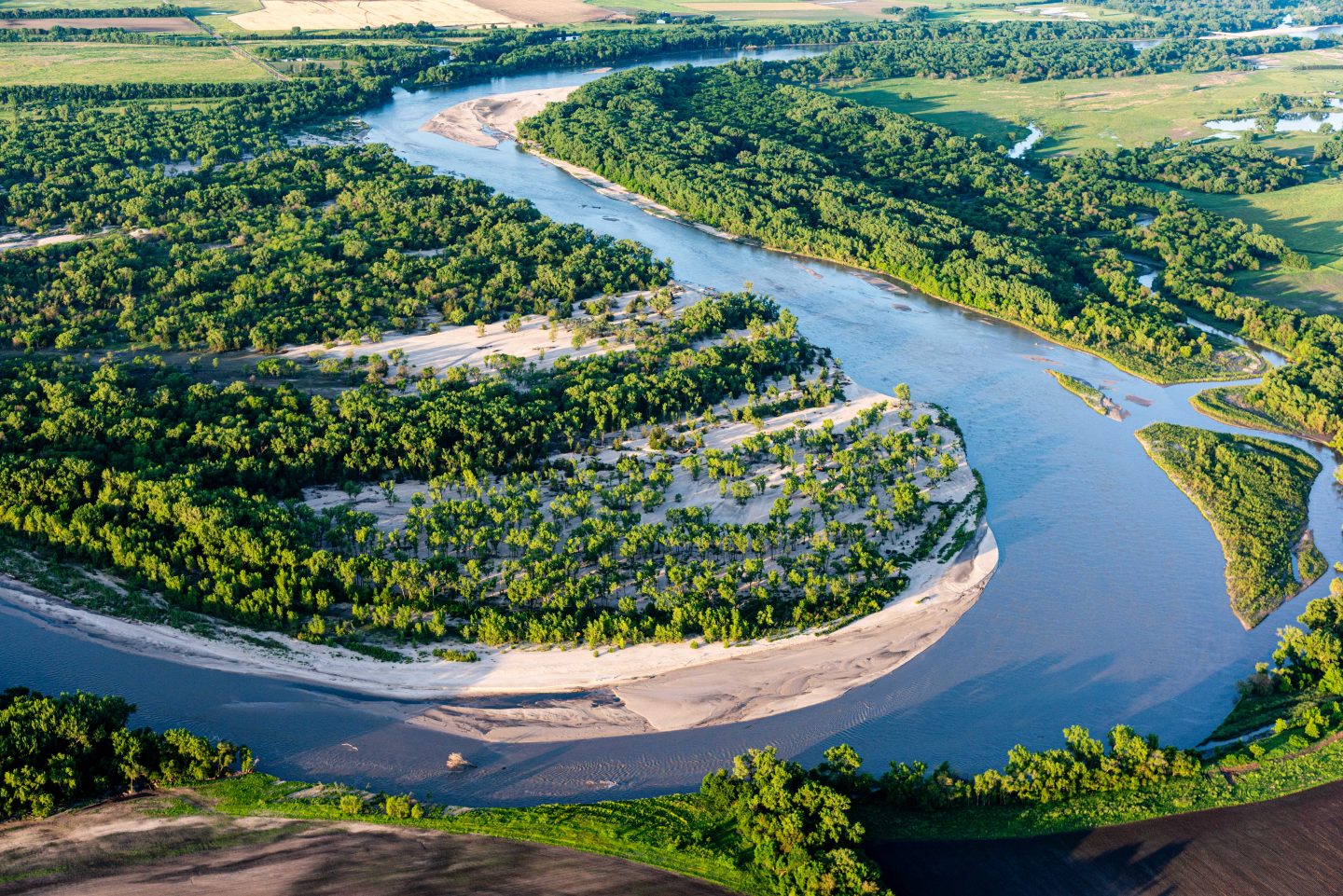
Instead of sandbars, most of the sand we saw was what historic flooding in 2019 piled on massive point bars. Those bars were reshaped a few weeks before our trip when the river approached flood stage following heavy rains. The latter had harvested a fresh crop of cottonwoods from the banks, leaving the river dotted with fresh snags.
The power district maintains at least 275 cubic feet per second of flows in the river throughout the year. They are limited in the amount they can divert from March through June, meaning there is often more water in the river, making it the best time to paddle. Flows can still be highly variable during this time depending on rainfall in the basin. For the remainder of the summer, flows are low, but navigable.
Ken and Brian had tested the river during lower flows in July of 2022. Paddling from George D. Syas WMA to Monroe when flows were 350 cfs at Genoa, they had to work to stay in the deepest channel but rarely had to put down their paddles, grab a bow rope and walk.
With higher flows, our trip from Monroe to Columbus took six hours, including a stop for lunch and a few more to relax. “That was fun today,” Curry said. “But it was long and definitely not a beginner’s course.”
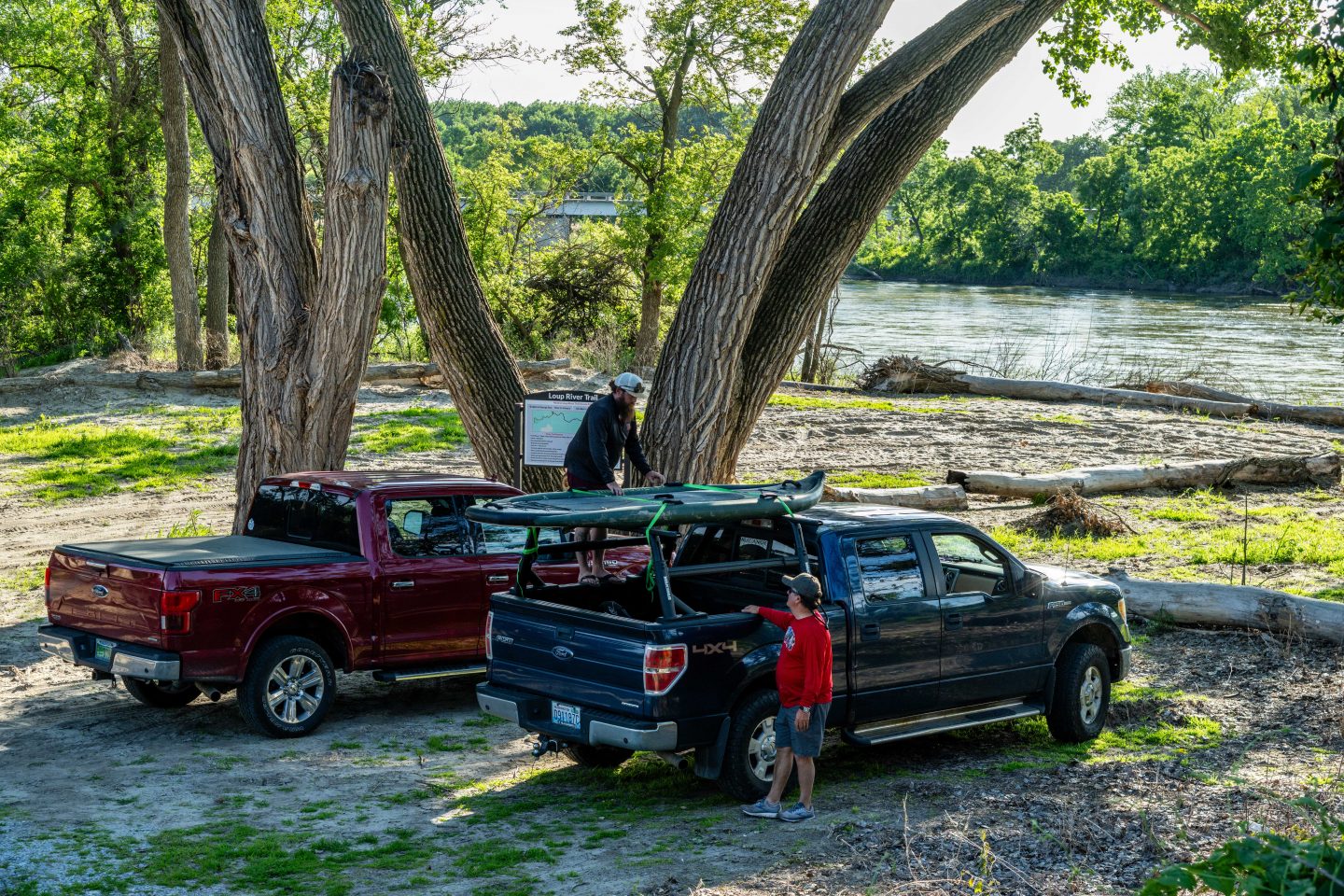
Curry said the other two segments of the trail are more suited for paddlers not looking for an all-day adventure. The upper segment is a 3- to 4-hour float and the lower should be 2- to 3 hours, a distance that could even be inviting to tubers. He can see someone launching an outfitting business to ferry customers to and from the access points at Columbus and expects people to drive from Lincoln and Omaha to float the river. “You’ve got 1.5 million people within an hour,” Curry said. “You saw the activity on the river today. Kids are hungry and families are hungry for fun on that river.”
And now, they can easily access it.
Kayaking Etiquette
When paddling Nebraska’s rivers, remember that only the water belongs to the State of Nebraska. The riverbeds and all adjacent lands are the property of the landowner through which the water flows. Appreciate the privilege of using the waterway. Be respectful and mindful of landowners and their property. Nebraska state statutes give users permission to portage around fences and other obstructions; however, you are responsible for any damage to the property. You must have landowner permission to picnic or camp.
There are 11 established water trails in Nebraska. For a complete list and to download trail guides, go to OutdoorNebraska.gov and search “Water Trails.” The website also includes an interactive trail map, tips, a list of river outfitters and more.
The Pawnees
The Loup River Valley was once home to the Pawnee Indians. They called themselves Wolf People, or “Skidi” in their native tongue. Early French traders called them the “Pani Loups,” and the river took their name. The Pawnee, however, had their own name for the river: Kari Kitsu, or “Plenty Potatoes River,” named for the abundance of tubers Native American women gathered along its course.
The Skidi were one of four Pawnee tribes living in central Nebraska. They were farmers who lived in earth lodge villages and raised corn, beans and squash. They were also hunters and spent much of the year hunting bison along the Loup, Republican and Platte rivers.
Once numbering more than 60,000, European-borne diseases brought to Nebraska by white settlers and local battles greatly reduced their population. The tribe eventually ceded its territory to the U.S. government and was relocated to what is now Pawnee County in Oklahoma. Today, the tribe has 3,200 enrolled members.
